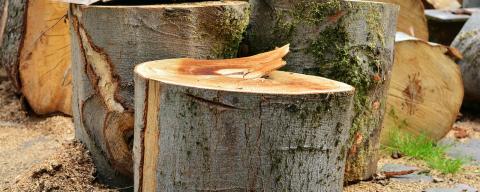Cutting Your Own Firewood
Many folks harvest firewood from their own woodlots, using the activity to thin out lower-quality trees, thereby improving the forest.
If you plan on cutting down trees and working up your own firewood supply, even if you've had experience, we recommend that you take the time to learn about personal protective equipment, setting up a safe work environment, the proper techniques for felling and bucking trees and maintaining your equipment.
Get permission from the owner before removing any wood from another person's property. This includes logs lying roadside or pallets stored behind a business. We recommend getting the permission in written form that details where and which trees you may cut (or deadwood you may remove), how you plan to take it from the property, and condition in which you will leave the site after you've finished. Note: The landowner may need to file an Intent to Cut form with the town and pay a timber tax on the wood you cut.
You can get a permit to harvest dead and down wood from the White Mountain National Forest. You must have a permit before removing wood from the National Forest. Call 603-528-8721 for more information.
The Safe Timber Harvesting manual contains all the essential information for folks who plan to cut their own firewood, although most homeowners won't need the sections intended for professional logging operators, such as managing work crews and skidder operations.
How much do I need?
The amount of wood required to heat a house depends on a number of factors: the size and interior layout of the house, how weather-tight the house is and the type and efficiency of the wood stove. A 1500-square-foot, fairly weather-tight New Hampshire house will burn between four and five cords of seasoned wood during an average New Hampshire heating season.
